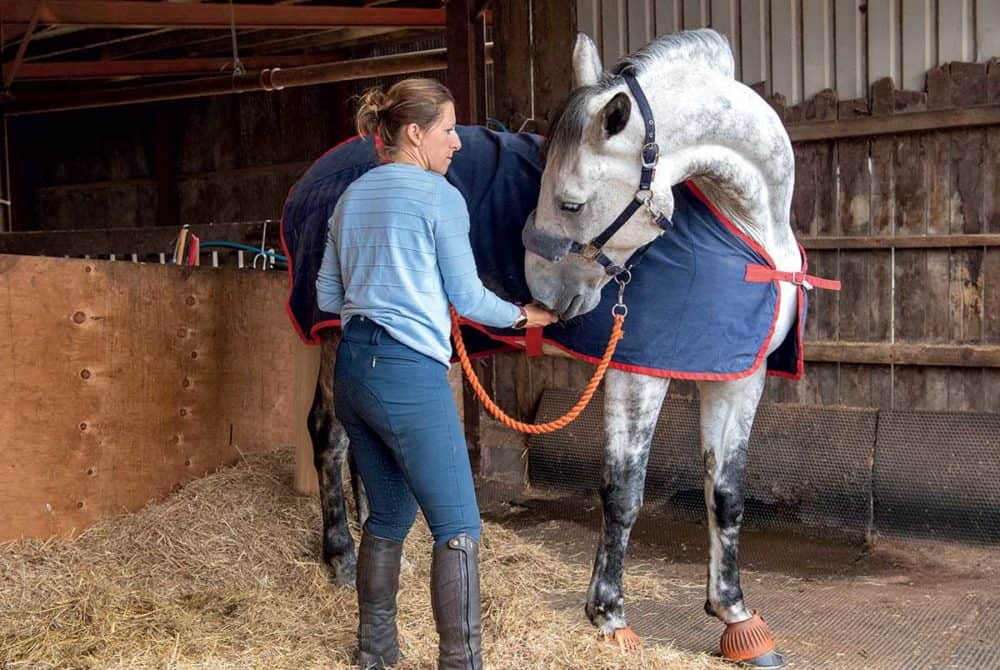Breeze through your horse’s box rest
Posted 30th November 2021
Fizz Marshall helps you find your way through your horse’s recovery, keeping him happy and healthy in the process

For most of us, hearing that our horse needs to go on box rest is a fairly stressful prospect. How will he cope with being stabled, especially if he usually spends most of his time turned out? Will he gain weight? Will he lose muscle? How can you keep him entertained when he’s confined to the four walls of his stable?
The questions racing through your mind can feel endless and overwhelming but follow these six simple steps and it’ll pass much more easily than you might imagine. Not only that, but they’re changes that will make the time he spends in the stable easier on him, whether he’s in for six, 12 or 24 hours a day.
Ask the experts
When your vet prescribes box rest, it’s important to get a clear idea of what they’re actually recommending. Don’t be shy to ask some questions, including…
- does your horse need total confinement, or is he allowed out for periods of time each day?
- can he graze or go for in-hand walks?
- could you set up a small turnout pen to allow him limited movement?
- how long will you be expected to keep him in?
- would any improvement along the way allow you to make alterations to the routine at all?
If you’re unsure of anything midway, get in touch with your vet. They’ll always be on hand to answer your questions and reassure you.
Keep him busy
While being in a space that your horse is comfortable with is crucial to a successful period of box rest, it’s likely he’ll become bored with the same surroundings sooner or later. To avoid him creating his own distractions, which can be disruptive at best and stressful or even harmful at worst, a bit of additional stimulation won’t go amiss.
Boredom busters don’t need to be expensive and, while there’s an array of options on the market to make forage last longer or distribute treats throughout the day, there’s plenty you can do if you recruit your imagination. A small-holed haynet’s a great place to start and works as a brilliant way to make forage last longer for those at risk of piling on the pounds while off work, too.
You could also chop up apples or carrots and push them through the net or hide them in nooks and crannies around the stable to encourage a bit of movement. Not only does this offer your horse a treat, but it also presents him with the challenge of extracting them.
Getting out
While box rest sounds like an all-encompassing term referring to a situation where your horse is stabled 24/7, the definition isn’t always so strict. Turnout’s rarely included in the meaning but specified amounts of time for walking out in-hand are often allowed.
No matter how chilled your horse normally is to lead around, box rest changes all the rules. For a start, it doesn’t provide a horse with many opportunities to let out any excess energy. The result is that he could become tricky to deal with. Take your safety seriously – walking out in a bridle and lunge line will give you more control should life get a bit exciting outside the confines of his four walls – and always wear a helmet, gloves and sturdy boots to protect yourself.
Consider where and when you’re walking him – does it need to be on a hard or soft surface? Think about quiet areas you can access for safe exercise, which may include an arena if he’s allowed to walk on a soft surface. Consider when your yard’s at its quietest to avoid other people and their horses moving around, and don’t walk him just before feed time or when the others have just been turned out.
Pick up your copy of January Horse&Rider, on sale 2 December 2021, to discover how you can keep your horse occupied and happy while on box rest











